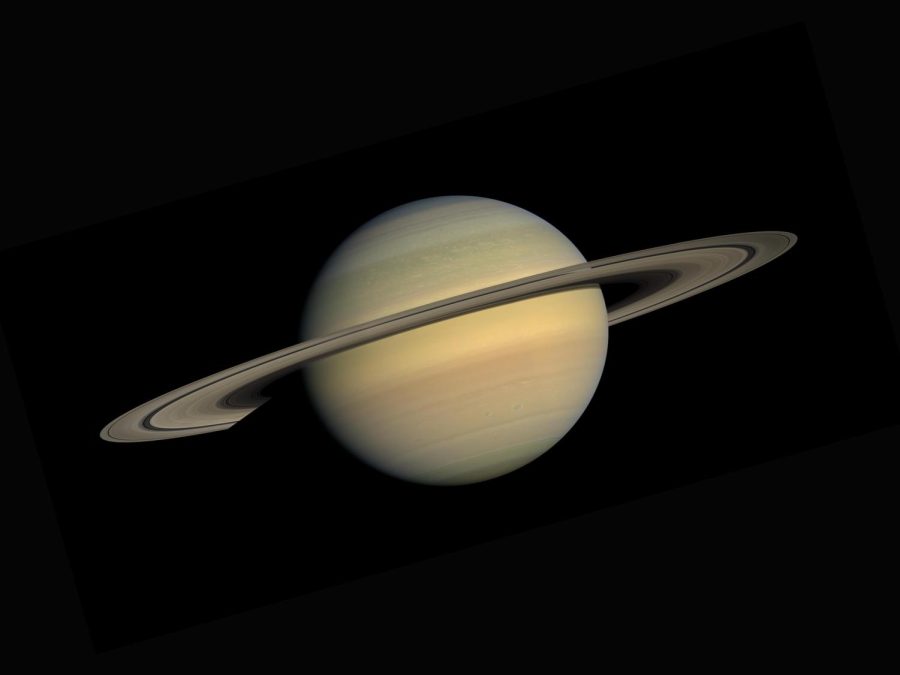Union County College Hosts Revisit of NASA’s Cassini Mission to Saturn
March 31, 2023
On March 17th, at 9 pm in Union County College’s Roy Smith Theatre, planetary astronomist Dr. Carrie Anderson presented a fascinating rundown of NASA’s 20-year Cassini Mission spanning from 1997 to 2017, accompanied by remarkable images taken by the spacecraft. The event was completely free and included an additional free telescope viewing session at the campus’ William Miller Sperry observatory after the presentation; unfortunately, weather conditions prevented this viewing, however, complimentary drinks and dessert were still offered.
As a part of the CIRS (Cassini Composite InfraRed Spectrometer) team for twelve years, Dr. Anderson was able to provide an in-depth description of the Cassini-Huygen probe that explored Saturn’s system for 13 years. It made history as the first to orbit Saturn and the only to land on an outer solar system object. The mission found that Saturn’s rings are relatively young in comparison to the planet’s history; the rings are estimated to be about 10 to 100 million years old, meaning that the planet was likely ringless up until the age of the dinosaurs. Additionally, a huge Northern Hemisphere was accidentally discovered, and Cassini’s camera SEARS mapped out the event for 2 years.
Furthermore, Dr. Anderson especially focused on Cassini’s exploration of some of Saturn’s 83 moons. The mission’s findings on moons Enceladus and Titan proved particularly groundbreaking. For instance, Enceladus’s eruptions of water ice particles supply the planet’s iconic E ring. This moon also reflects over 80% of sunlight, making it the most reflective object in the solar system. Regarding Titan, the second largest moon of Saturn, Cassini found that the body is a promising parallel to Earth. The moon showed a history of Earth-like structures such as lakes, rivers, channels, sand dunes (which are actually water ice dunes as hard as granite due to the low temperatures), rain, tropospheric and stratospheric clouds, and mountains. However, Titan’s surface once rushed with liquid methane instead of liquid water.
On September 15th of 2017, Cassini was too low on fuel for scientists to guide the mission safely, so the spacecraft was plunged into Saturn after its 22nd orbit of the planet. This bittersweet end to a revolutionary mission does not mark the end of expeditions to Saturn, though; Dr. Anderson reminded the audience at the end of her presentation that NASA has an upcoming mission named Dragonfly that is set to further explore Titan in the 2030s.
This event was overseen by Amateur Astronomers Inc. (AAI), a local organization in Union County that meets monthly to present topics in astronomy and organize additional events like the discussion of Cassini. In fact, this May 20th, on Astronomy Day at Trailside Nature and Science Center in Watchung, Union County, AAI is helping to host a family-friendly day of all things astronomy including solar observing and a presentation on the James Webb Telescope – their website asterism.org provides more details on this event. If you’re interested in just viewing stars on your own, Union County College encourages free public use of their telescopes at the Sperry Observatory every Friday night.

